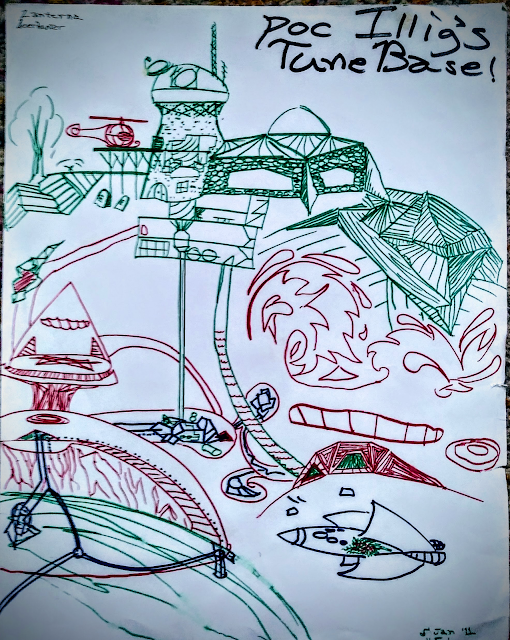Golden Paths
All over Mars the terraforming crews cautiously tinker with new rhythms. Ravens and barrowrats, podrats and b-kats and mites, j-dogs and a hundred kinds of gaussian and non-gaussian humans. In only a few centuries no colonist can fully claim to have *adapted*; that's generational work.
Several among the postterrestrial daughter species hibernate each winter, sharing dreams along their webworked nervous systems. Their deep slow sleep, filled with shared locations and artefacts held in common, spreads across the months of cold like landscape. Congenetics of the Martian colonists, estranged in small bands and barrios across the solar system occasionally dip, too, into the homelanders' vision.
Each spring, the barrowrats emerge from their tunnels in the arctic zone to attend to their waking affairs. They monitor the solar collectors and windtraps, play in the glacial ravines, every spring a different landscape. While the barrowrats work above ground, migratory podrats extend the tunnel system. Both clades mingle after sunset in chambers at the interface between tunnels and surface ramparts.
J-dogs don't hibernate, but of course like all Martians can enter a protective trance by volitional hormone release, dropping oxygen consumption and body temperature to survive a night outside. What songs their indirect ancestors held over plains and valleys, j-dogs now howl planet wide across their equatorial range and into orbital habitats, a hundred thousand voices raised to union.
Several among the postterrestrial daughter species hibernate each winter, sharing dreams along their webworked nervous systems. Their deep slow sleep, filled with shared locations and artefacts held in common, spreads across the months of cold like landscape. Congenetics of the Martian colonists, estranged in small bands and barrios across the solar system occasionally dip, too, into the homelanders' vision.
Each spring, the barrowrats emerge from their tunnels in the arctic zone to attend to their waking affairs. They monitor the solar collectors and windtraps, play in the glacial ravines, every spring a different landscape. While the barrowrats work above ground, migratory podrats extend the tunnel system. Both clades mingle after sunset in chambers at the interface between tunnels and surface ramparts.
J-dogs don't hibernate, but of course like all Martians can enter a protective trance by volitional hormone release, dropping oxygen consumption and body temperature to survive a night outside. What songs their indirect ancestors held over plains and valleys, j-dogs now howl planet wide across their equatorial range and into orbital habitats, a hundred thousand voices raised to union.
[written ca. 1998-2001, scrytch era]

Comments
Post a Comment